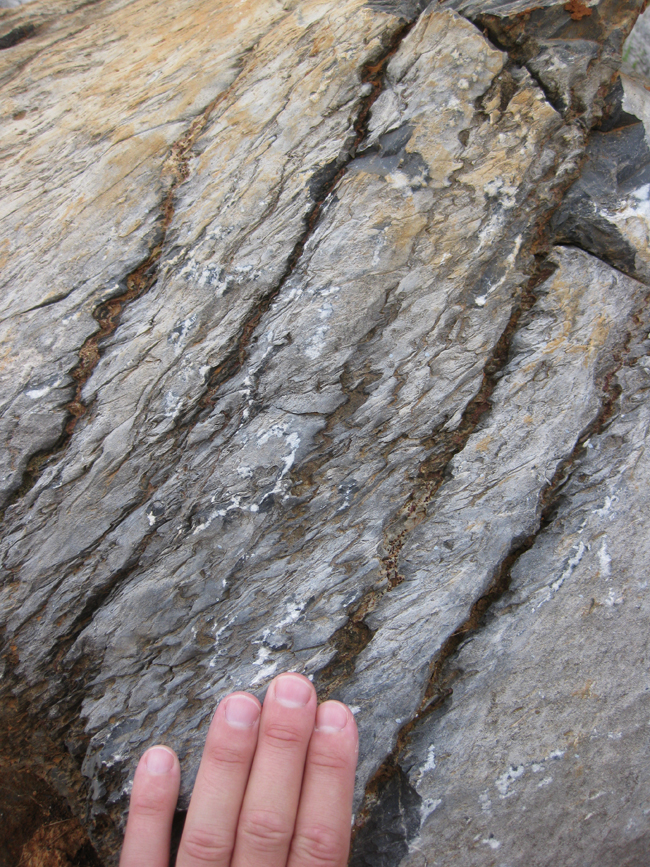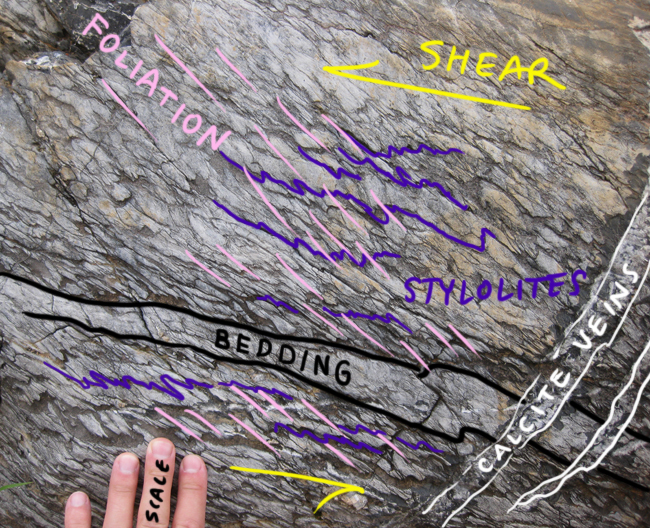One thing that’s 100% worth doing if you find yourself visiting Natural Bridge, Virginia, is to pop in for a visit at Foamhenge, an art installation a few miles away. Foamhenge is a full-scale replica of Stonehenge, made of styrofoam (covered in gray latex paint). It’s a few years old now, so it’s begun to weather a bit:

You’ll notice that classic orange soil and that there are also outcrops of real rock at the site. We’ll get to those in a moment. First, it’s worth taking a moment to examine the exterior of the plinths:

Peeling gray paint reveals the styrofoam beneath…

The artist who made Foamhenge, Mark Cline, invites visitors to visit and does not charge a fee. When we stopped in, we had the place all to ourselves.
I spent some time marveling at the lovely strained stylolites to be seen in the (real) limestone exposed at the site…


These outcrops reminded me very much of the strained stylolites at Big Gem Park in Shenandoah, Virginia…


The stylolites appear to be parallel to compositional layering (original sedimentary bedding), but they are asymmetric, indicating shearing, presumably during Appalachian mountain-building’s ultimate phase, the Alleghanian Orogeny.

Same scene, annotated:

Whether it’s real rocks or fake rocks, there’s plenty to hold one’s attention at Foamhenge. Stop in some time… and tell Merlin that the Bentleys say “hi” (you’ll understand when you get there!)…

Not to pick nits but if it has foliation and stylolites wouldn’t that make it marble and not limestone? (Still very awesome to see thank you I’ll be checking that out.)
Nope – it’s not recrystallized. No sugary texture. The distinction between metamorphism and deformation gets tricky around these parts (i.e. in the realm of high strain but very, very low grade metamorphism). See the comment train at the link above for a more through discussion.